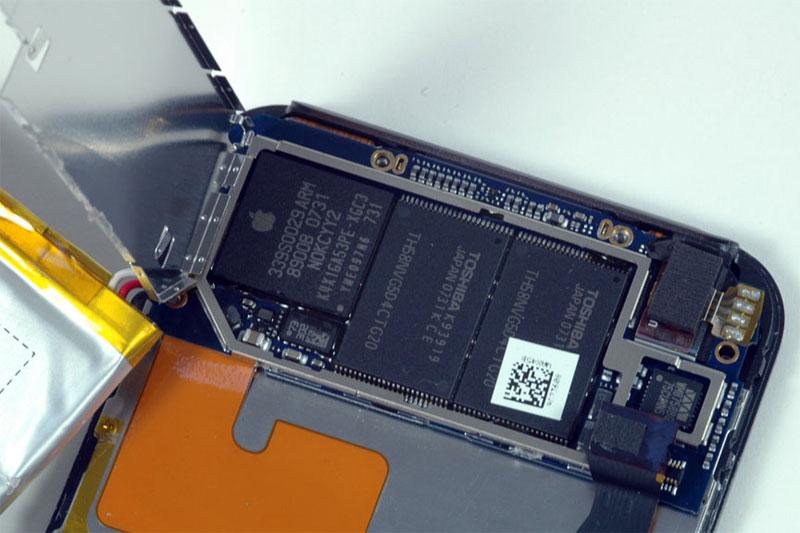Component and manufacturing costs for Apple's new 8GB iPod touch media player account for only $155 of the device's $299 retail price, according to a fresh product teardown from iSuppli Corp.The research firm notes that the $44 touchscreen and sensors, which are sourced from the combination of German-based Balda and other Far Eastern suppliers, are the most expensive components of the player, accounting for approximately 28 percent of the product's total cost.
"Functionally, the Apple iPod touch is an iPhone minus several features, including cell-phone capability, Bluetooth and certain software elements," said Andrew Rassweiler, teardown services manager and principal analyst for iSuppli. "Otherwise, the core features of the iPhone user experience are all present in the iPod touch, including orientation sensing, web surfing via Wi-Fi and the product’s signature feature: a 3.5-inch diagonal touch screen with multi-touch sensing."
Rassweiler estimates that Apple's iPod touch and iPhone designs share about 90 percent of the same components. Among them are a Samsung Electronics video/applications processor -- a chip based on an ARM microprocessor core and employing stacked on-package memory -- which comprises another 8.5 percent of the player's bill-of-matials at $13.19. The two touchscreen devices also share a power-management IC from NXP Semiconductors, costing $2.61 and accounting for 1.7 percent iPod touch's total cost.
However, the touch’s design differs from the iPhone in that it is uniquely optimized to meet its form-factor and cost requirements, iSuppli said in its report. To cut space usage, the touch makes use of some advanced packaging for its components not seen in the iPhone, including 0201 diodes and passive components in 01005 enclosures on the touch’s WLAN module.
"This is the first time iSuppli has seen these components in a product we’ve torn down,†Rassweiler added. "Apple products always seem to push the envelope in terms of space savings, and therefore we often first see the newest, most-compact components in Apple products."
The iPod touch design also pushes the envelope in terms of memory density; the high-end version of the product includes 16Gbytes of NAND flash memory, more than any product in the Apple iPod line. In contrast, the high-end iPhone offers only 8Gbytes of NAND flash.
Another notable difference is in the Printed Circuit Board (PCB) design. The touch employs a single PCB as opposed to the iPhone’s modular two-PCB design.
Other differences between the iPod touch and the iPhone include a new set of components to support the touch’s Wireless LAN (WLAN) functions and the location of the touch-screen circuitry on the main PCB -- rather than on the touch-screen module.
Based on the history of the various Apple iPod products, iSuppli has assumed a total lifetime of one year for the first-generation iPod touch. The firm estimates that if Apple follows its historic product pattern, it will manufacture about 8.5 million first-generation iPod touches during the approximate one-year period from the third quarter of 2007 through the beginning of the third quarter of 2008. At that time, iSuppli expects the first-generation touch will be replaced by a new product in the third quarter of 2008.
However, the firm hedged its bets by explaining that its forecast could be impacted if Apple chooses to replace the iPod touch sooner to coincide with the introduction of a new model of the iPhone. Furthermore, if the product lifetime extends to two years, production could increase to as much as 20 million units, the firm said.
"The touch, along with the nano, may drive Apple’s HDD-based iPods close to extinction in the near future,†added Chris Crotty, senior analyst, consumer electronics, for iSuppli. "While not a dollar-for-byte match for HDDs, flash now offers sufficient capacity that many consumers are willing to trade off storage for advanced displays and features."



